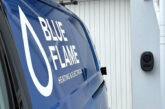
The team at Doncaster Cables looks at the requirements for ‘smart’ EV charging installations and how its latest product development is helping electricians to save time, hassle and money.
The global market of electric vehicles continues to demonstrate rapid growth, with the number of electric passenger cars surpassing a value of 5 million cars on the road in 2018 – a 63% increase on the previous year.
Market experts expect the growth of electric vehicles to continue with best estimates showing in excess of 20 million vehicles globally by the end of 2020, 100 million by the end of 2025, and over 250 million by 2030.
To date predictions have fallen closely in line with realised figures which explains why the necessity of suitable and comprehensive charging networks has been realised by companies, industries and Governments alike.
To date, the installation of LDV charge units has closely matched the number of electric vehicles on the road, with 5.2 million chargers installed globally by the end of 2018.
It can be assumed that the demand for charging units will continue to follow the predicted increase in electric vehicles.
What is ‘smart’ charging?
Smart charging refers to a charging system that accommodates a shared data connection between the electric vehicle, charging station and user. Smart charging allows energy consumption to be monitored, managed and restricted to optimise energy consumption in terms of both cost and practicality of use.
The benefits of smart charging are so prevalent that the Government OLEV grant was amended on 1st July 2019, resulting in smart chargers only being eligible to receive it. Accompanied with user benefits such as reduced running costs, scheduled off-peak tariff usage and the avoidance of nuisance tripping via load management, smart charges are now most commonly installed.
However, whilst smart charging offers inherent benefits, it does create installation problems for electricians.
Whilst some chargers have adopted Wi-Fi connectivity to establish data connections, many charger manufacturers identify the issues associated with Wi-Fi (such as range and signal loss due to structures) and have opted to use ‘hard wired’ data connections which increase reliability and user experience.
This means that electricians commonly need to install two cables – one for power and one for data – which results in more effort, longer installation times, carrying more stock and often having to navigate two cables through difficult routes into the building.
Fortunately, Doncaster Cables identified this problem and has developed a solution to help electricians.
Power and data – in just one cable
The Doncaster Cables EV-Ultra range combines power and data in one cable, resulting in a faster, neater and easier installation for electricians.
EV-Ultra provides reliable hard-wired data connectivity in the form of either a 2 core or a Cat5e data cable and is available in both a steel wire armoured or Tuff-Sheath version.
The range has been developed with quality in mind and incorporates the highest quality materials to achieve a cable that is both thermally and UV stable, and capable of operating at higher current ratings than the alternative NYY cables – often meaning that a smaller cable size can be used.
Running data and power in a single cable is a concern for many electricians, with most believing that segregation of power (Band II) and data (Band I) is always required. It is, however, already common to find power and data inside one cable in many existing applications. An example of this is DALI networks which incorporate data within a 5 core power cable. Another example appears not to far away from EV chargers and is evident in the lead that connects many cars to the charging unit itself.
Proximity of electrical services (extract from 528.1) – Except where one of the following methods is adopted, neither a Band I nor a Band II circuit shall be contained in the same wiring system as a circuit of nominal voltage exceeding that of low voltage, and a Band I circuit shall not be contained in the same wiring system as a Band II circuit. (i) – Every cable or conductor is insulated for the highest voltage present.
EV-Ultra consists of power conductors and data cables that are rated to the same nominal voltage – therefore segregation of power and data isn’t required.
Proximity of communications cables (extract from 528.2) – Special considerations of electrical interference, both electromagnetic and electrostatic, may apply to telecommunication circuits, data transfer circuits and the like.
EV-Ultra has been designed with these considerations in mind, as it incorporates screened, twisted pair data cables and is constructed with a lay length that reduces interference. Laboratory and on-site installation tests have also been conducted and no interference or degradation of signal was recorded.
EV-Ultra also comes with the added reassurance of being manufactured by Doncaster Cables. The company firmly believes that UK manufacturing is the best way to achieve its core values of safety, quality, reliability and trust.
Get more details by clicking here












